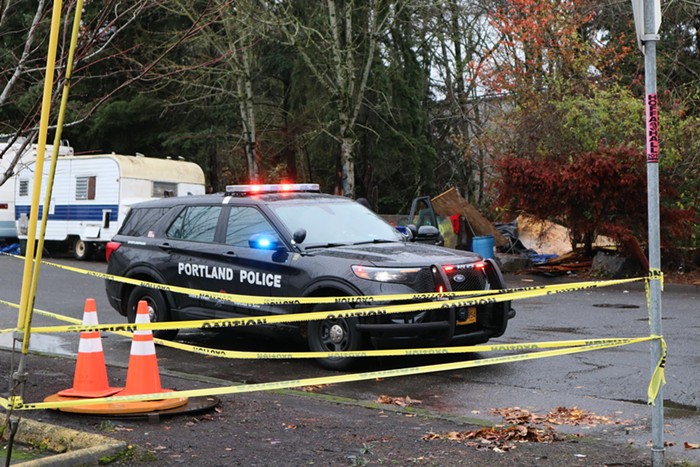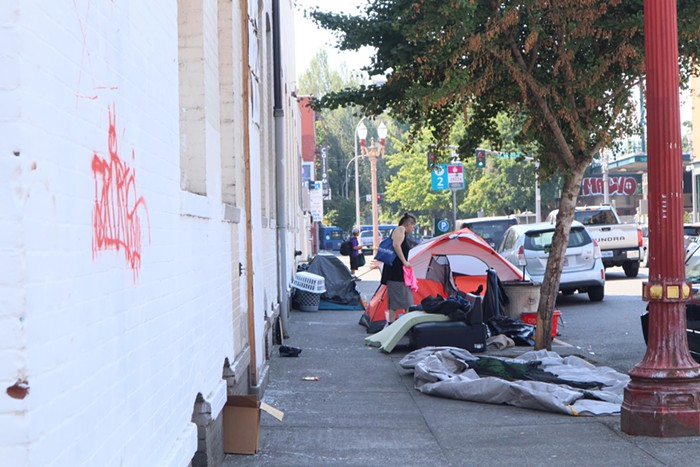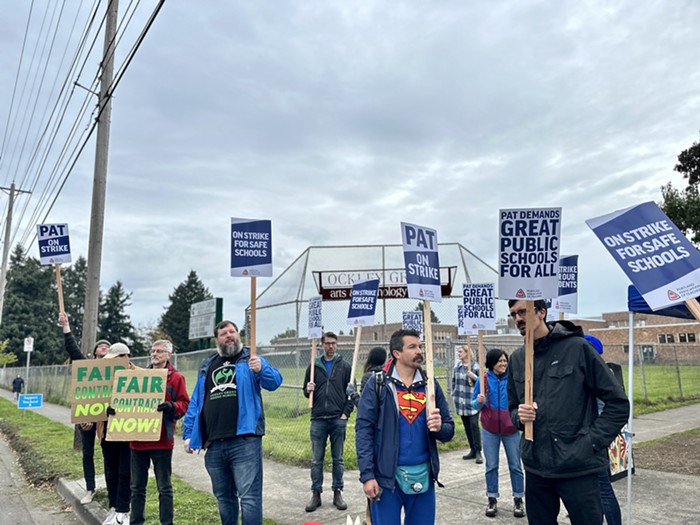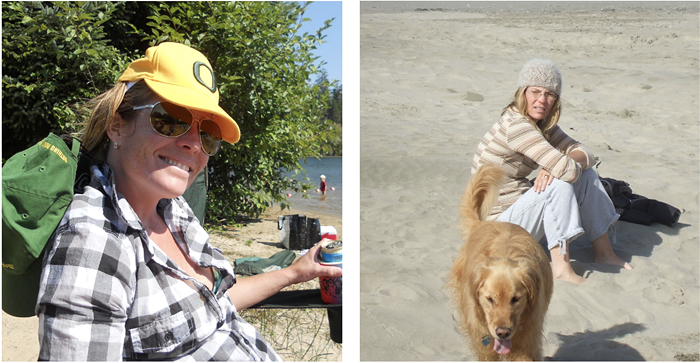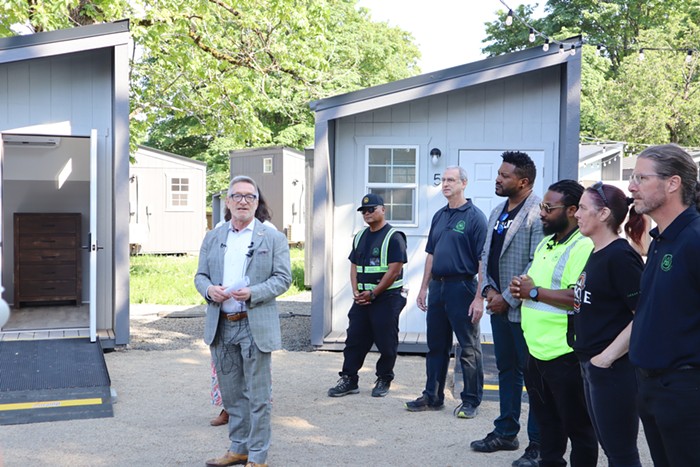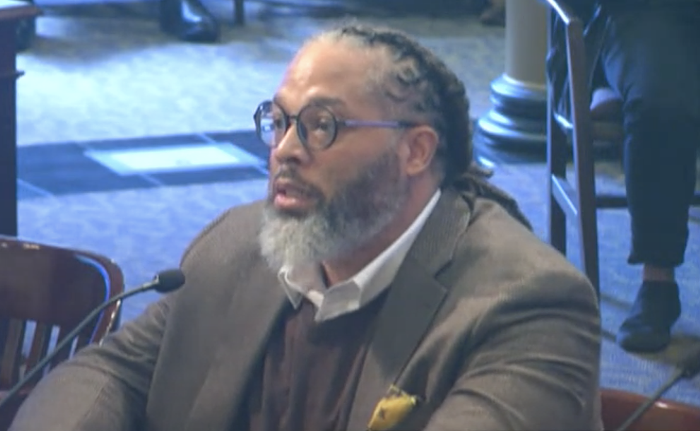Last week, the Portland Public Schools Board voted to divide a program for gifted children, splitting students between two existing schools in historically underserved neighborhoods. In the process, they outraged both community members and the schools.
The program, ACCESS Academy, serves around 300 talented and gifted kids in Portland Public Schools (PPS) whose needs can’t be met in regular school settings.
Up until recently, ACCESS was housed in Rose City Park Elementary, a vacant PPS building in Northeast Portland. But a November decision by the PPS board forced the program to relocate by the start of the 2018-2019 school year. The district spent seven months searching for a new location, and after a number of misses, settled on splitting ACCESS students by age between Lane Middle School and Vestal Elementary School—four months before the first day of school.
“This has been too long of a process for ACCESS and too short of a process for the other schools,” said PPS Board Chair Julia Brim-Edwards at the May 30 meeting where the vote took place. Despite Brim-Edwards’ admission, the board passed the resolution with a 6-1 vote, eliciting cries of “shame on you!” from attendees.
The ACCESS decision is the latest example of community frustration with PPS’ recent school changes—changes that, according to PPS, are meant to undo some of the district’s poor decisions made over a decade ago. In 2007, to fight declining funding and enrollment numbers, then-PPS Superintendent Vicki Phillips turned several elementary and middle schools on the Eastside into schools serving kindergarten through eighth grades (K-8). In recent years, PPS has admitted that shift led to inequities in those historically underserved schools.
Starting in 2015, PPS began discussions to return those schools to their original state, culminating in a November 2017 board vote to open two new middle schools, Roseway Heights and Harriet Tubman, for the 2018-2019 school year. It also redrew school district boundaries and turned Rose City Park school into a grade school—thus displacing ACCESS.
“We have heard too many times from PPS that they’re sorry they did it wrong [and] they’ll do better next time."
Though the November vote was intended to address systemic inequities stemming from the changes of the mid-2000s, it’s caused its own problems. According to PPS parents and staff, the process made them lose faith in the district.
“We have heard too many times from PPS that they’re sorry they did it wrong [and] they’ll do better next time,” said Kate Sage, a parent of a Vestal student, at the board meeting. “Stop the rhetoric that it’s not possible in the limited time that you have created for yourselves to find a better option for our communities.”
One of the biggest concerns for the schools that will now host ACCESS is that the incoming kids will take over the extra space Lane and Vestal were promised by PPS in recent years. Anna DeVille, a kindergarten teacher at Vestal, said the influx of students from ACCESS will pack the facility “beyond capacity,” a concern shared by ACCESS parents.
And although PPS’ shift away from K-8s was meant to address inequality, the very schools that were just given space by the November 2017 vote shifting them away from the K-8 model were also the only ones considered for ACCESS relocation, leading to claims of ongoing discrimination.
“To see who [PPS has] tried to pair ACCESS with is very troubling,” a PPS teacher who asked to remain anonymous told the Mercury. “Just look at the demographics—[those schools are] serving mostly Black and brown students who are being pushed out of the neighborhood.”
"We’re trying to do right by kids with very, very serious constraints.... We’re trying to undo more than a generation of terrible decision making.”
Not one school on PPS’ original list for potential ACCESS destinations has higher than 50 percent enrollment of white students—even though the district as a whole is more than 55 percent white. In comparison, Vestal and Lane are both “majority-minority” schools—Lane’s students are just 37 percent white, while Vestal is 44 percent white.
And then there’s the issue of transparency. Teachers at the schools under consideration were given less than three weeks’ notice that ACCESS may come to their schools before the vote was made—and parents say they were given less than 24 hours’ notice that a vote was even taking place.
At Lane and Vestal, ACCESS students—who are 67 percent white—will essentially fill the space left behind by students being moved out of the K-8 model. The spaces where staffers had hoped to create art rooms, preschools, and reading rooms for their students will instead host a separate program for ACCESS students.
And ACCESS students are losing opportunities as well. Now divided between schools that are miles apart, ACCESS kids of different ages may no longer be able to share classes—one of the major perks of the program—and they may lose some other elements of the program due to lack of space.
Still, PPS believes the shift will be helpful in the long run. PPS Superintendent Guadalupe Guerrero said ACCESS students may be able to share optional electives classes (like art and computer science) and teachers with other students at Vestal and Lane.
“This has been an impossible position,” said PPS Board member Rita Moore before the May 30 vote. “We’re trying to do right by kids with very, very serious constraints.... We’re trying to undo more than a generation of terrible decision making.”
Many parents and teachers remain critical of PPS due to the unexpected and less-than-ideal changes.
In the words of Martha Ruttle, an ACCESS parent who spoke at the meeting: “You have squandered the good will and trust of this community all year.”
